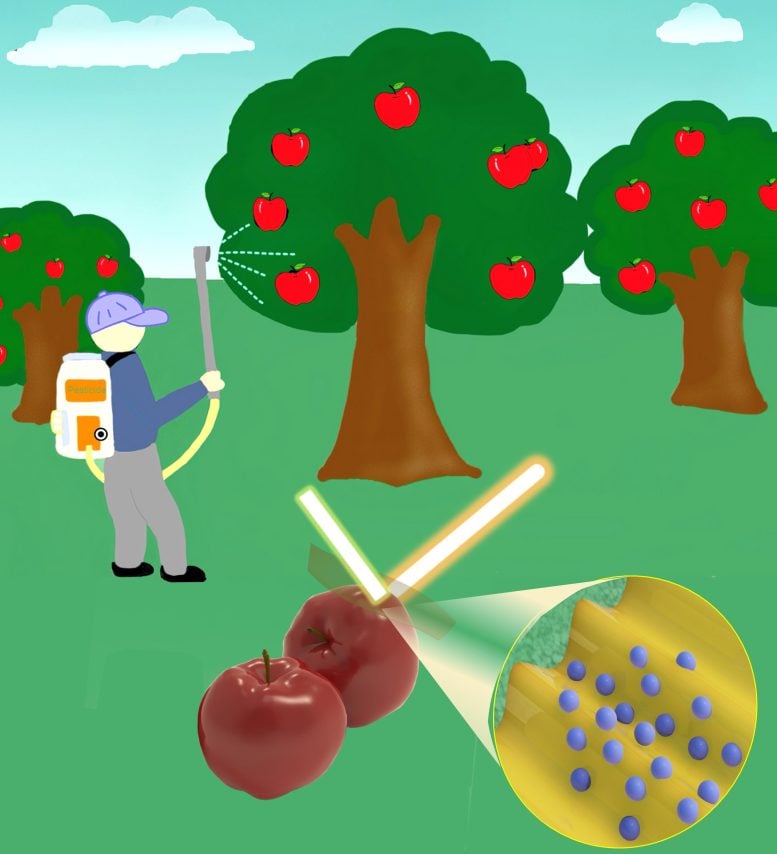Researchers have developed a new method to detect low-level pesticide residues on fruits using a metal-coated membrane, indicating that washing might be insufficient for removing pesticides, necessitating peeling for safe consumption.
A new study has introduced a technique using surface-enhanced Raman spectroscopy (SERS) to detect low levels of pesticide residues on food, suggesting that washing alone might be insufficient to remove pesticides, and peeling may be necessary.
Pesticides and herbicides are critical to ensuring food security worldwide, but these substances can present a safety risk to people who unwittingly ingest them. Protecting human health, therefore, demands sensitive analytical methods to identify even trace levels of potentially harmful substances. Now, researchers reporting in ACS’ Nano Letters have developed a high-tech imaging method to detect pesticide contamination at low levels, and its application on fruits reveals that current food safety practices may be insufficient.
The analytical method called surface-enhanced Raman spectroscopy (SERS) is gaining popularity as a nondestructive method for detecting chemicals from modern farming on produce. With SERS, metal nanoparticles or nanosheets are used to amplify the signals created by molecules when they are exposed to a Raman laser beam.
The patterns created by the metal-enhanced scattered light serve as molecular signatures and can be used to identify small amounts of specific compounds. Looking to improve SERS sensitivity for pesticide detection, Dongdong Ye, Ke Zheng, Shaobo Han, and colleagues designed a metal-coated membrane they could lay atop farm-grown produce. They also wanted to develop the material to be versatile enough to accommodate an array of other applications.

A sensitive analytical method finds that removing agricultural pesticides from foods such as apples may require more than a simple wash. Credit: Adapted from Nano Letters 2024, DOI: 10.1021/acs.nanolett.4c01513
Development of a New SERS Membrane
The researchers started with a cellulose hydrogel film, which they stretched to form aligned DOI: 10.1021/acs.nanolett.4c01513
The authors acknowledge funding from the National Natural Science Foundation of China.


















![Ep265: [Lean Series] 5 Ways You’re F*cking Up Your Fat Loss Ep265: [Lean Series] 5 Ways You’re F*cking Up Your Fat Loss](https://carrotsncake.com/wp-content/uploads/2025/01/IMG_3025-768x1024-1.jpg)
.png)

Discussion about this post